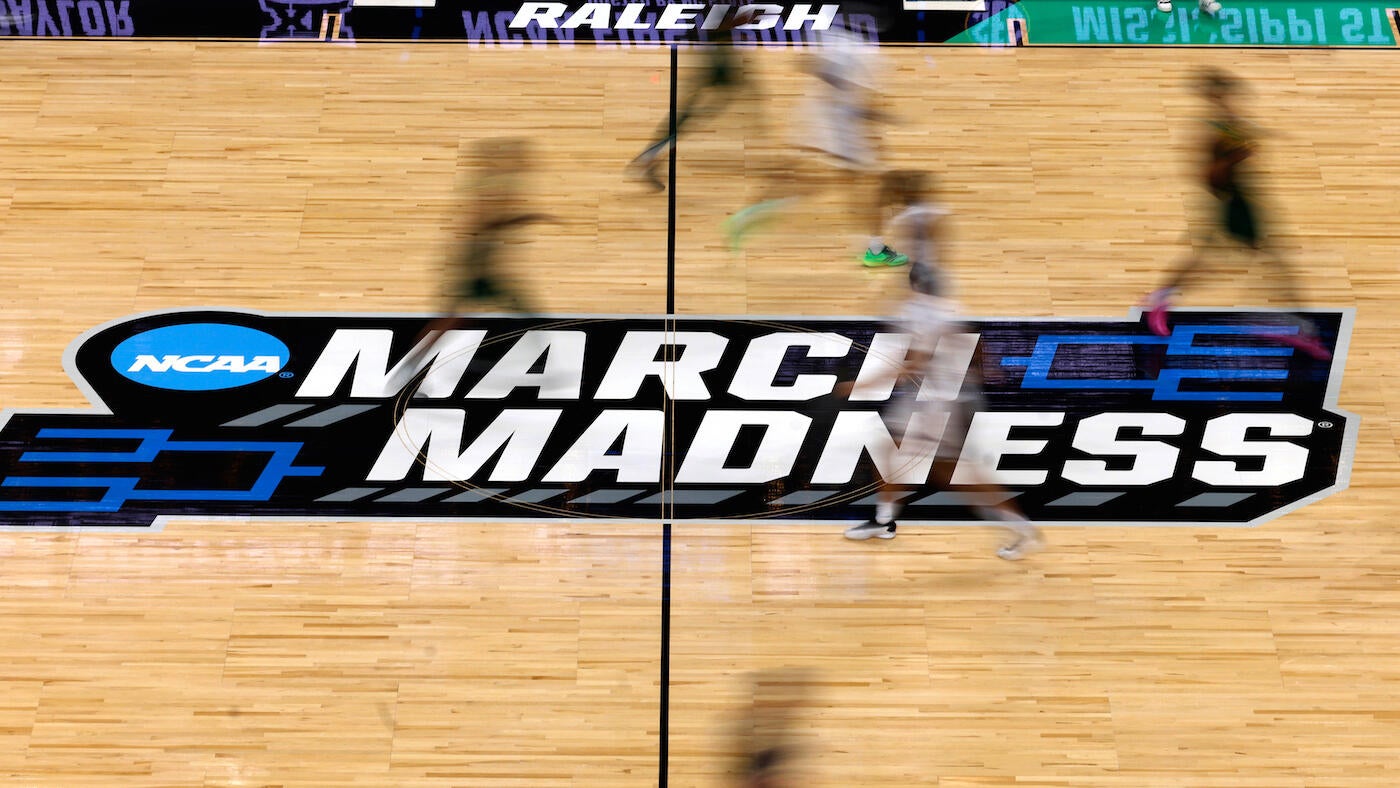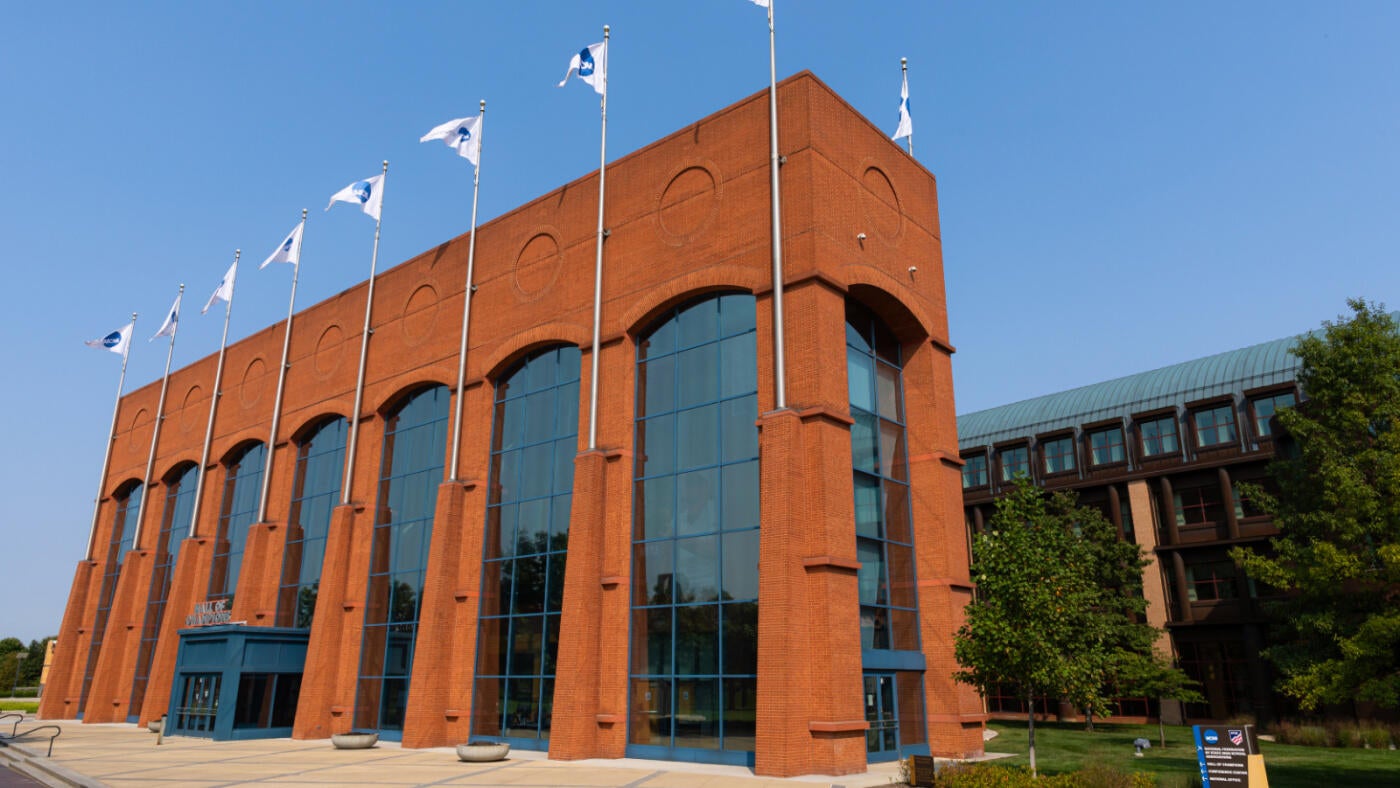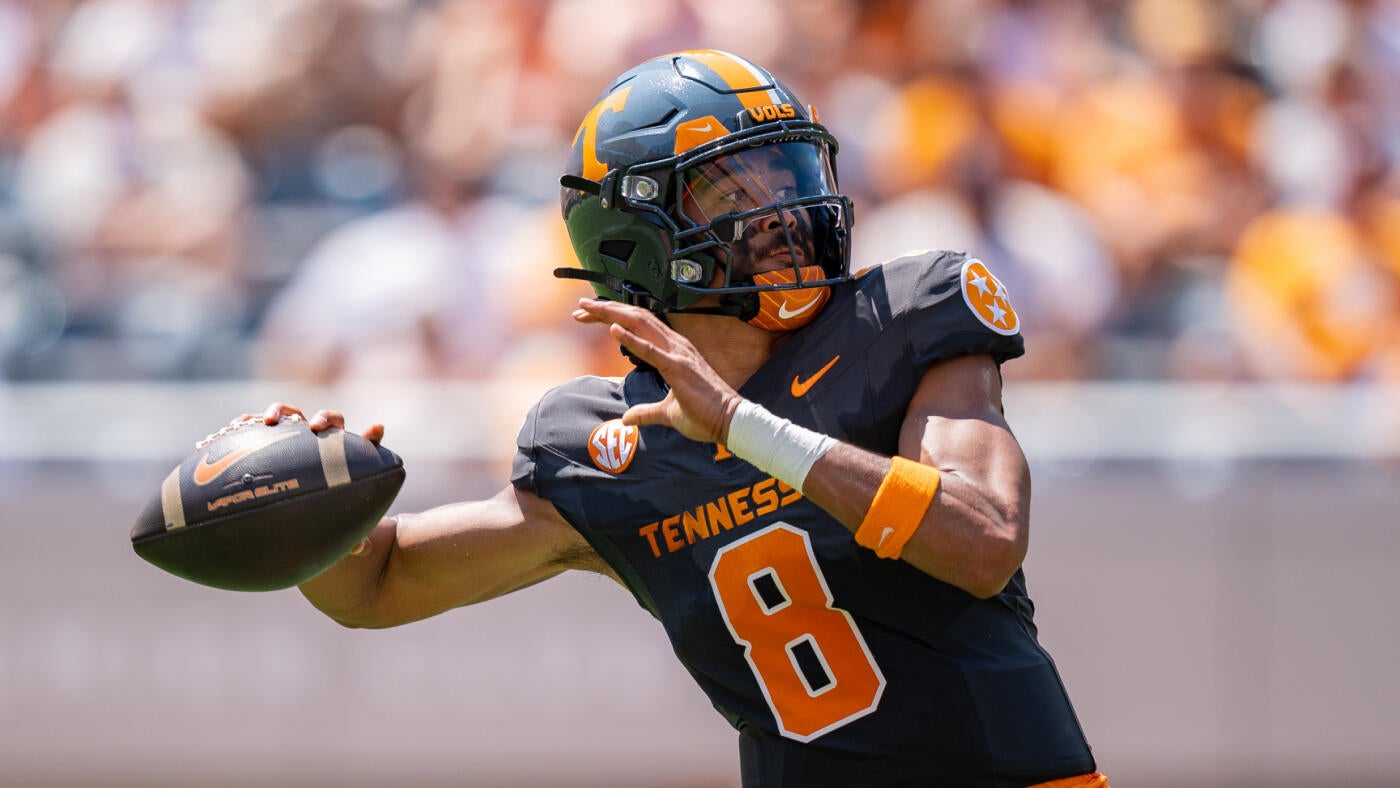The race to keep up with $40 million rosters is shaking college football

BLOOMINGTON, Ind. -- It's the first day of college football's spring transfer portal window, players are jumping in left and right, and Indiana coach Curt Cignetti is anxious.
Coming off an 11-2 2024 season that included a College Football Playoff berth, life is pretty good in Bloomington. The university and its supporters are committed to investing in Indiana football, ensuring it can be more than just a one-hit wonder. With the fiery Cignetti's unrelenting pursuit of success and the player and coaching talent returning, Indiana will have a real chance at making the College Football Playoff again in 2025.
But Cignetti is still uneasy -- and for good reason. Tampering is rampant in college football, and around every corner, a possible enemy lurks trying to poach one of Cignetti's players. In what was supposed to be a relatively quiet portal period, it has instead been super-charged with football programs making a last grasp at adding as much talent as possible before a likely NCAA v. House settlement that paves the way for revenue sharing.
"This is an unprecedented couple days, weeks, where everybody's waiting on this rev share, and the five or six out there that have unlimited NIL resources, it's kind of scary for everybody else," Cignetti told CBS Sports. "I think our little pot of gold is pretty nice, but we're not at $40 million. Or $30 million. Or even $25 million."
A year ago, Ohio State made national headlines when athletic director Ross Bjork said the football program spent $20 million on its eventual national championship-winning roster, but multiple industry sources with knowledge of the market told CBS Sports the top spending programs in 2024 paid upwards of $30 million.
Is Cignetti saying the top of the market is now $40 million?
"Right now, I would say yes," the Indiana football coach said.
Forty million dollars on a college football roster.
That is four times the new $10 million club at the top of college basketball that CBS Sports' Matt Norlander detailed last week. One athletic director at a major college program recently told me that the most expensive college basketball roster could be $15 million-$18 million in 2025. Norlander put 10 schools in that exclusive $10 million club: Arkansas, BYU, Duke, Indiana, Kentucky, Louisville, Michigan, North Carolina, St. John's and Texas Tech.
Cignetti's proclaimed list of the biggest spenders isn't as long but there is some overlap with the top basketball budgets.
"I mean if you want to be the best, you got to be able to compete against the best," Cignetti said. "Right now I understand that is Oregon, Ohio State, Texas. ... Texas Tech because of their oil money. I think Notre Dame's up there pretty good right now, too. Miami, of course."
Three of those schools rank in the top five of 247Sports' team transfer portal rankings while Texas has added four Power Four defensive linemen transfers, one of the most expensive positions to grab out of the portal.
"Those people are kind of playing their own game, but you've got to be in that next tier," Cignetti said. "There are enough good ones out there. You've got to be able to retain your good ones and then go get what you need."
By the end of that first day of the spring window, more than 500 FBS players had jumped into the portal with many more to come in the following days. It ranged from starting SEC quarterbacks like Nico Iamaleava to second-team all-ACC receivers like Trebor Pena to star Cal running back Jadyn Ott.
The influx of likely revenue share money with NIL has sent player compensation skyrocketing. This isn't necessarily new -- CBS Sports detailed its impact on the market back in December -- but that it has continued into April is, at least partially, because of a 75-year-old federal judge who resides in California.

In the swan song of a long legal career, Judge Claudia Wilken is expected to rule soon on the landmark House case. Multiple college sports executives told CBS Sports they thought it could happen at the end of last week by Good Friday, but when that came and went, the hope is now it'll be this week.
If Wilken approves as expected, it will set in motion a $2.8 billion settlement and allow schools to begin paying their athletes directly as soon as July 1. Within those terms, schools are expected to have a $20.5 million "cap" in Year 1 to spend on all their athletes, with the specific payout up to each school's discretion.
There are some notable things to consider out of that basic information.
One, if the top end of last year's college football market was $30 million and the absolute max a school can spend now is $20.5 million -- and no school will spend exclusively on football -- something has to give. Either player compensation will have to come down, or schools will have to find a way to make up that money in other areas like NIL. Under the revenue share era, the difference is there will be third-party enforcement of NIL deals to see if they hold up to an ambiguous fair market value.
A Deloitte-administered NIL clearinghouse will weigh in on every NIL deal of $600 or more to determine whether it holds up to a fair market value assessment. There are a lot of different interpretations of what that enforcement will look like (more on that later) but the idea of regulating what has been a free-for-all for years has prompted some programs to be extra aggressive this cycle. The thinking goes that every deal signed before Wilken officially approves the House settlement won't be subject to any review. It offers potentially the last opportunity to double-dip with unregulated NIL money and the impending revenue share money, allowing for programs to spend tens of millions on their 2025 rosters.
"People are trying to offload money now but this will be the last cycle where guys are getting big paychecks because of rev share," says South Carolina general manager Darren Uscher.

Texas Tech, which currently has 247Sports' top-ranked transfer portal class, has been the most aggressive ahead of the revenue share era. Its top boosters saw an opportunity, decided that money was no object, and went all-in on landing a class that included recent Stanford transfer edge-rusher David Bailey, who multiple sources said will make more than $2.5 million to suit up for the Red Raiders next season.
"They are insane," one NIL agent said, almost in awe. "They are crazy and do not care. I think they are like, we have one shot before this gets figured out to build a team, and we'll just overpay people."
It's not just oil money-fueled Texas Tech, though. The agent detailed a recent negotiation with an SEC school for a top tackle. In December, he says, the market for a player of his caliber was in the $1 million to $1.5 million range. Now, it was $2 million to $2.5 million for no reason other than to spend as much money as possible before revenue sharing begins.
"Just raise the number, who cares," is how the agent described the school's approach. "Let's just get him in there."
Darren Heitner, a prominent sports law attorney, was bombarded with requests in the lead-up to Wilken's April 7 House hearing. Schools were desperate to get deals finalized ahead of the hearing in case the settlement was approved that day. At a minimum, plenty of schools thought Wilken would rule before the spring transfer portal window opened on April 16, creating an unexpected final opportunity to deploy unregulated NIL money.
"This will be the last cycle where guys are getting big paychecks because of rev share."South Carolina general manager Darren Uscher
Heitner never believed Wilken would make a final ruling that day but happily obliged the requests and tried to extract as favorable terms as possible for his clients in the rushed scenario. The sports law attorney who works with athletes and collectives says there is no consensus among the industry on what it all means. Some schools fear what's to come and think every deal must be completed before the settlement is approved. Others believe that there's nothing to worry about as long as they are done before June 30. And the most bullish are skeptical of any enforcement component and will continue operating as they have been. It makes for a muddled market where it's challenging to sift through what's real.
"I would characterize it as absolute uncertainty and/or willful ignorance and trying to utilize the uncertainty as leverage when there's a possibility of doing so," Heitner said.
Consider Heitner in the skeptical department that the rush to get deals done is necessary.
"At the end of the day, even if Wilken just signed off on this revised settlement agreement, is there any real reason to be fearful of the system that's going to be implemented?" Heitner said. "Do we really think that spending is going to be decreased as a result? I don't."
Are NIL and rev share contracts binding?Many coaches and administrators hope revenue share agreements will calm a wild market. Currently, there are essentially two free agency periods, including one during the College Football Playoff, that allow players to potentially jump to multiple schools within an academic year.
Tight end Tanner Kaziol transferred to Houston from Wisconsin just last week after playing for Ball State last season. Quarterback Joey Aguilar entered the transfer portal Monday after UCLA recently added Nico Iamaleava. Aguilar, who played at Appalachian State last season, went through spring practice with UCLA but is now headed to Tennessee, the former home of Iamaleava.

There are numerous other examples of players transferring away from schools before ever playing a game for them.
"Supposedly the thought was when they signed part of what they're signing is a rev share deal is they are bound, to some extent, to your school," Cignetti said. "You own their NIL rights. It hasn't slowed down all these other guys jumping in."
Miami defensive back Xavier Lucas is believed to be the first one to test the enforceability of the revenue share agreements when he left Wisconsin in January after signing a two-year deal that granted the school the non-exclusive rights to use his name, image and likeness. Wisconsin refused to submit his name in the transfer portal but Lucas went ahead and left the school anyway, enrolling academically at Miami. Heitner, who represented Lucas, had planned to file a lawsuit against Wisconsin for allegedly violating NCAA rules in its refusal to submit Lucas into the transfer portal before he withdrew academically from the school. Lucas, the 20th-ranked transfer player, is projected to be a starter for the Hurricanes in 2025.
The same questions Cignetti raised about rev share deals can be said for NIL agreements. In both college basketball and college football, collectives have devised agreements intended to bind a player to a school and force either the player or the new school to pay out the contract if said player chooses to leave. In a world without player unions and collective bargaining, this is the attempted workaround to bring stability to what is otherwise unregulated free agency all year.
The question is whether any of it is legally enforceable. Mit Winter, a well-known sports law attorney at Kennyhertz Perry LLC, believes they are not.
Arkansas athletics director Hunter Yurahek appears dead-set on finding out, announcing his support for NIL collective Arkansas Edge pursuing the enforcement of "their rights under any agreement violated by our student-athletes. The social media post came one day after backup quarterback Madden Iamaleava followed his brother, Nico, to UCLA
Heitner is currently representing a football player in a similar scenario. The player wants to enter the transfer portal and forfeit any remaining obligations while the collective is trying to enforce clauses within the contract which include liquidated damages. Heitner's argument is that by leaving now and giving the school a chance to replace the player, "there's really no harm whatsoever." Still, like most things within college athletics these days, it'll take a lawsuit to see what holds up or not. The same could be said for the fair market value assessment where Heitner says he's already been asked to start preparing a lawsuit to challenge it once the House lawsuit settlement goes through.
Will the House settlement be approved, and if so, when? Can revenue share agreements provide stability to the current unrestricted free agency within college sports? Will the big collectives and NIL money still run the sport or will the new NIL clearinghouse enforcement actually have some teeth to it?
These are all questions coaches and administrators are asking themselves right now. With little clarity or direction, it is up to each individual school and coach to decide what is right and wrong strategically in this new era.
For coaches like Cignetti, coming off a terrific season, there is baited breath trying to get through this final portal window, which closes April 25, with an intact roster against a predatory market looking to pay big money for contributors.
"Right now is a different time," the Indiana coach said. "These next couple weeks who knows how long until this thing gets passed because there's some crazy stuff going on."
cbssports





